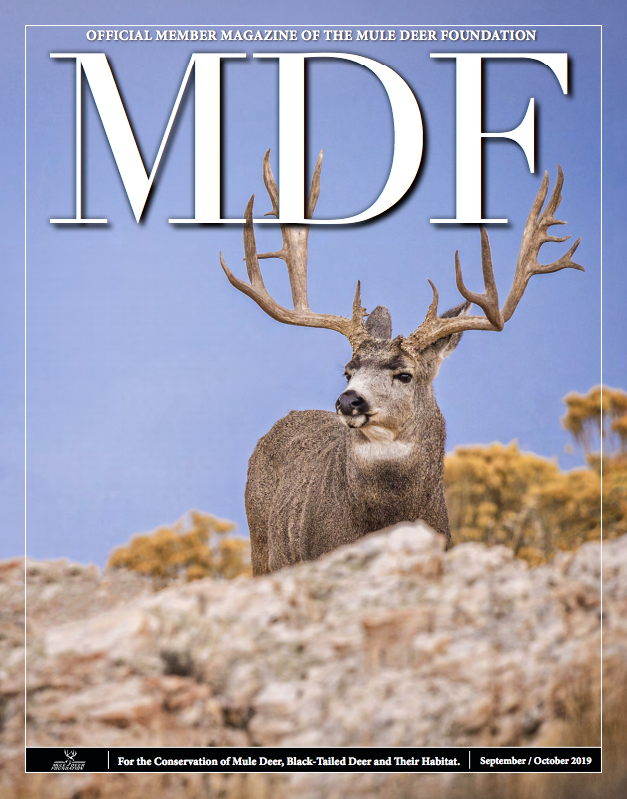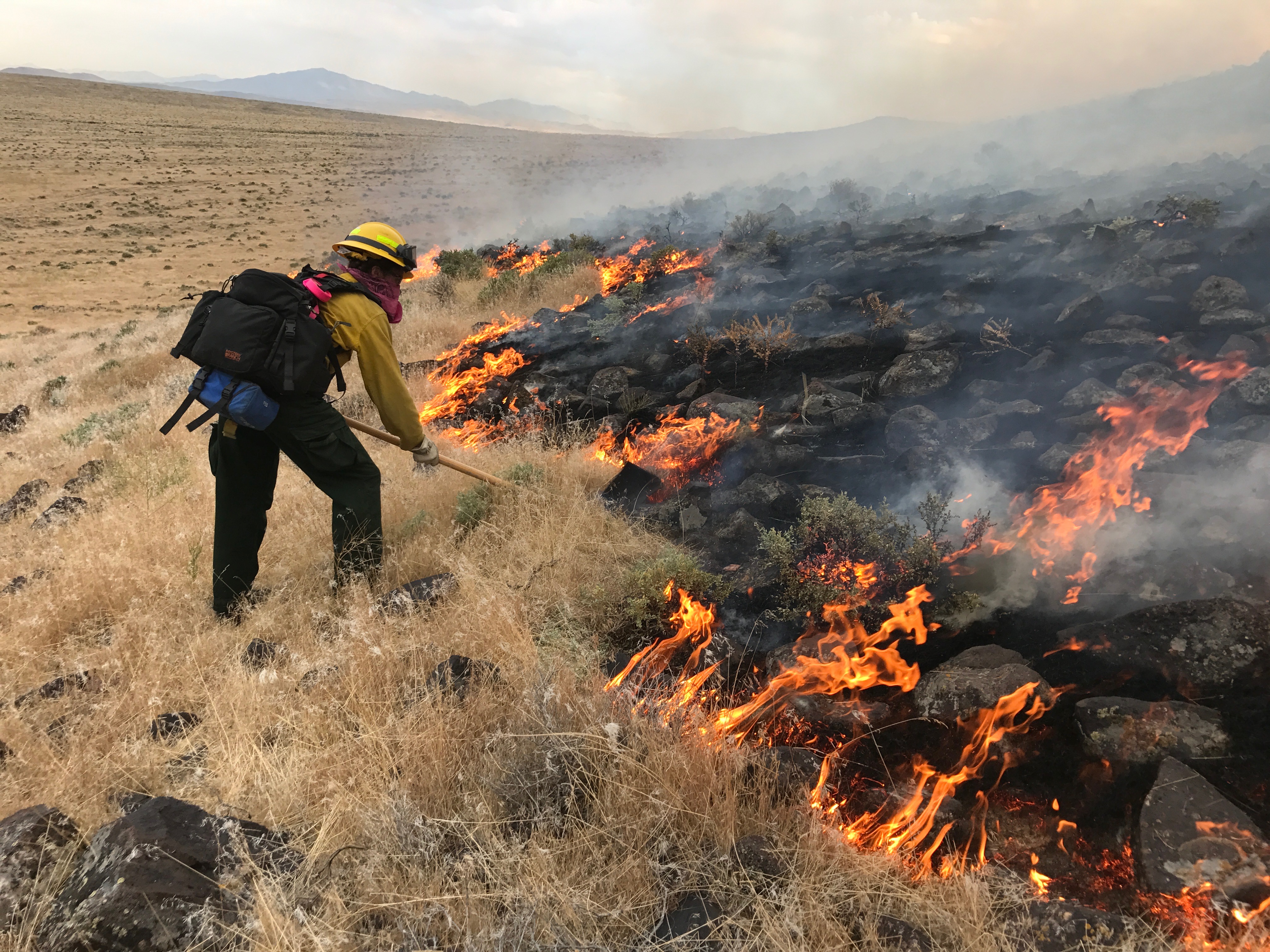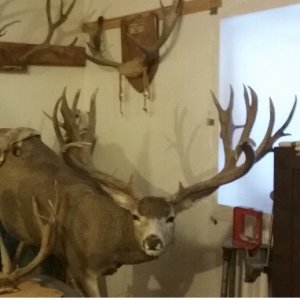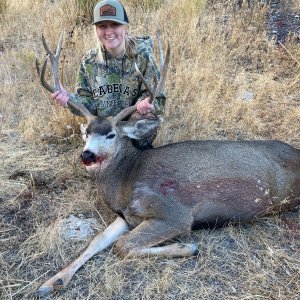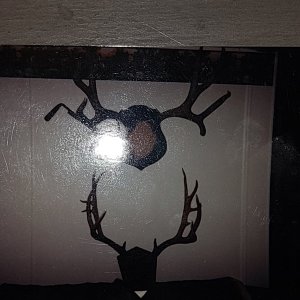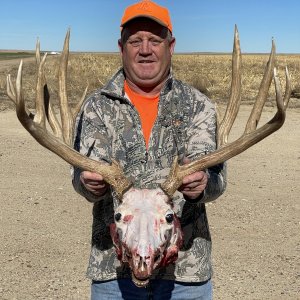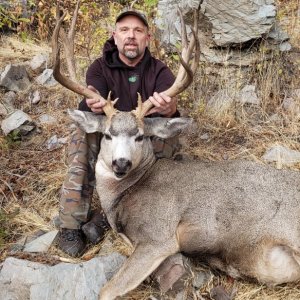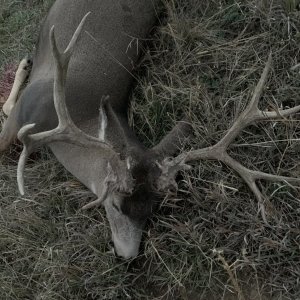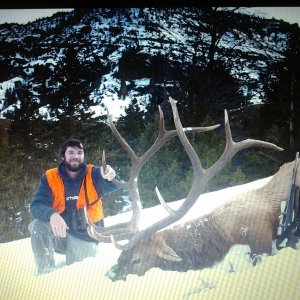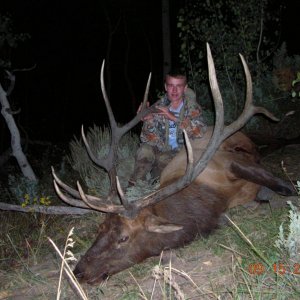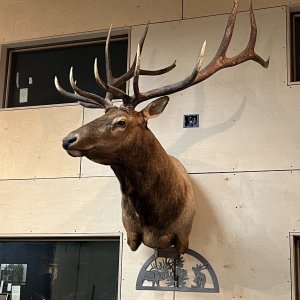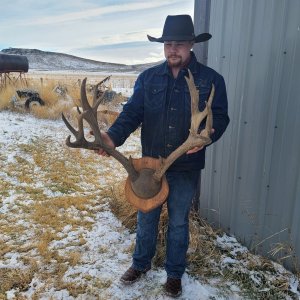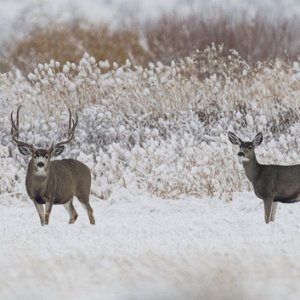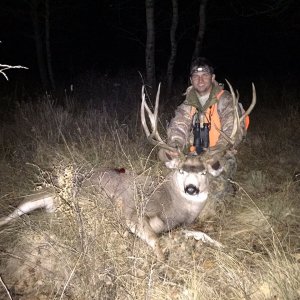Here's another article by the Wyoming Game and Fish.
Cheatgrass has been a scourge on the western landscape for more than a century, but the Wyoming Game and Fish Department believes there is hope in fighting it in some areas

wgfd.wyo.gov
WYOMING WILDLIFE - MARCH 2020
The Cheater
Like Wyoming, Nevada is combating the spread of cheatgrass. The invasive grass increases the risk of fire, which damages habitat needed for sagebrush obligates like sage grouse. Cheatgrass infests more than 100 million acres in at least 49 states. (Photo by Savannah Monterro, Winnemucca, Nevada, District Fire Program)
Cheatgrass has been a scourge on the western landscape for more than a century, but the Wyoming Game and Fish Department believes there is hope in fighting it in some areas
CHRISTINE PETERSON
3/1/2020 5:12:26 PM
In western Wyoming, spreading slowly and silently through critical mule deer migration routes and sage grouse leks — and just about everywhere else — is a scourge on the country’s landscape so old many people have simply learned to live with it.
“People didn’t realize 30 years ago the impact it might have,” Randall said. “We have places that did not have cheatgrass 10 years ago when we actively started managing cheatgrass but now have it.
Continuing in managing efforts, Game and Fish and partner agencies, including the Natural Resource Conservation Service, Bureau of Land Management and Sublette County Weed and Pest, treated 30,000 acres by spraying herbicides from a helicopter near Pinedale in 2018. The area has been identified as one where land managers may be able to fight the invasive plant which has creeped into habitats and altered the forage for many species in Wyoming.
But a fight some once thought futile is a challenge cheatgrass expert Brian Mealor, an associate professor at the University of Wyoming and director of the Sheridan research and extension center, believes can be at least kept at bay.
To do so it will take diligent range surveys, quick action, persistence, and money. Wyoming Gov. Mark Gordon formed two task forces in fall 2019 to look at the science of combatting cheatgrass and potential policy issues. The cooperative effort to tackle the species will need to be coordinated and aggressive in order to prevent the unwanted, fire-prone invasive plant from taking over healthy wildlife habitat acre by acre, meadow by meadow, hillside by hillside.
“If we are strategic and committed to working in the places that make the most sense and have the highest chance of recovery — and by committed I mean being committed to managing for a series of years,” Mealor said. “If that is true, then I think yes, we are nearing a stage where we can be optimistic.”
Cheatgrass threatens wildlife by converting productive habitat into areas overgown with unpalatable, invasive grasses. Cheatgrass and other invasive grasses take over sagebrush habitats important for many species of Wyoming' wildlife, including pronghorn.
Pervasive and unpalatable
At one point, ecologists believed some of Wyoming would be immune to the plant because of elevation and climate. The fallout of the drought in the early 2000s and again between 2010 and 2012 proved that theory wrong. Now cheatgrass has been found in every county and continues to grow in new areas.
Wildlife and livestock avoid eating the plant after it has cured for two reasons.
First, it’s largely devoid of protein and nutrition, said Ray Bredehoft, Game and Fish habitat and access branch chief.
Secondly, once it cures, the seed husks are unpalatable to anything from pronghorn to livestock, Cheatgrass’s unpalatability is only the beginning of its harm to wildlife and healthy lands.
A conduit for fire
To explain why cheatgrass is such a plague to the landscape requires a quick lesson on the ecology of Wyoming’s high plains.
Much of Wyoming is covered in sagebrush, native grasses and flowers or some combination of the three.
Sagebrush live for 50 to 100 years and slowly reproduce by seed. Most of the grasses, however, are perennials, reproducing year-by-year largely through a root system.
Native grasses die in the fall and sprout in the spring, greening up between March and July depending on the weather and species.
Some landscapes will be filled entirely by grasses and other forbs like wildflowers. But most areas are a combination of bushy plants like sagebrush or mountain mahogany with a variety of Wyoming’s native grasses filling the understory and gaps in between. The variation in green up allows everything from songbirds to mule deer to find delicious morsels from late winter until the snow begins to fall again.
Unfortunately for Wyoming’s native grasses, cheatgrass, well, cheats. It germinates in the fall, putting down roots and slowly growing before deep snow blankets the ground. That means in the spring, when native plants are trying to wake up, tiny cheatgrass stems are ready to grow. “They deplete the soil moisture preemptively before our natives are able to use it,” Mealor said. Shortly after they outcompete the nearby grasses, they die, leaving dead, brown stems and dry seeds in their wake and a sea of ground unable to support anything else.
The problem isn’t just that cheatgrass replaces one native grass, but it replaces all of them. Natural systems have grasses like bluebunch or western wheatgrass that grow in the spring and fade into Indian ricegrass or blue grama that sprout in June and stay green until the end of July with bushes and forbs intermixed. Cheatgrass creates a near monoculture.
As spring turns to summer and moisture fades from the soil, the 4-inch high stems of brown, dry grass and seed heads are a perfect conduit for fire. And fire, a natural and critical part of the western ecosystem, typically comes through sagebrush covered areas every 50 to 100 years. When cheatgrass takes over, fires can whip through every couple years or every year. Cheatgrass then thrives in disturbed soil, so more of the invasive plant grows in its place and slowly any chance of native vegetation from perennial grasses to sagebrush are gone.
The human-caused 2018 Martin Fire in Nevada burned more than 435,000 acres of what was once sage grouse habitat. Now largely what remains is cheatgrass.
“It nuked it,” Bredehoft said. “Nevada lost 30-some active bird leks. The birds were catching fire and spreading fire. You go to Utah, and it’s the same way.”
In the Great Basin, 11 of the last 50 fires were the biggest in history. Cheatgrass, Bredehoft said, is to blame. Randall witnessed the same issue near Boulder Lake. A fire burned through what had been sagebrush and an understory full of cheatgrass. About 20 years later another fire came through, thriving off even more cheatgrass. Firefighters fought quickly and aggressively and kept the blaze to only about 1,000 acres. But it’s part of a vital mule deer migration corridor, and she fears the future is clear.
“We won’t see sagebrush there in my lifetime unless someone goes in there and physically plants it,” she said. “That’s the kind of thing we want to prevent, and allowing cheatgrass on the landscape allows fuel source for those fires.”
A helicopter conducts aerial spraying of herbicide east of Pinedale in 2018. The location has been identified as one where land managers may be able to cobmat the spread of invasive cheatgrass. (Photo by Jill Randall/WGFD)
Cautious optimism
As with most invasive species, the best way to fight cheatgrass is to prevent it from arriving. The next best way is to attack an invading population immediately — to prevent the loss of native plants rather than try to reintroduce them. And the best way to fight is with herbicides, said Ian Tator, terrestrial habitat manager with Game and Fish.
The newest herbicide herbicide showing some promise is called Esplanade. It lasts for several years, killing more of the seed bank. But it also prohibits most plants from germinating. “You can only apply herbicides in places where there is a good perennial native component, they have a root system and will come back every year,” Tator said. “We’re losing out on germination of most native seed stock, but at least eliminating the cheatgrass component from coming back.”
—
Christine Peterson has spent nearly a decade writing about Wyoming’s fish, wildlife, outdoors and environment. She now works from her home in Laramie.
GAME AND FISH BRINGS THE FIGHT TO CHEATGRASS
The Wyoming Game and Fish Department is using several strategies to fight cheatgrass throughout the state.
- Land managers treated 42,205 acres for cheatgrass in 2018, including land on 21 Game and Fish Commission-owned Wildlife Habitat Management Areas.
- Game and Fish has 30 ongoing projects involving cheatgrass.
- In order to help land managers identify areas to treat, an interactive mapping tool has been developed to display the important wildlife habitats in the state. This brings a focus on areas most likely to recover or resist an invasive species like cheatgrass.
- Game and fish assesses areas before cheatgrass treatments and continues to monitor those areas after they have been treated. That data is used to inform management decisions.
- Game and Fish started the Stop Invasive Species In Your Tracks initiative in 2012 to protect valuable natural resources while encouraging people to enjoy the outdoors by removing plants, animals and mud from boots, gear, pets and vehicles when entering and leaving recreation sites, staying on designated roads and trails and using certified hay and local firewood.
For more information go to
wyoweed.org.

